Fabriquer son rack en bois pour son studio
- 54 réponses
- 21 participants
- 48 264 vues
- 32 followers
projectgigi
Voila j'ai dans l'idée d'éventuellement me fabriquer un petit rack d'environ 8-10 U pour y installer quelques appareils, je voulais savoir où je pourrai trouvé des tutos, pour savoir le type de bois que je peux utiliser, quel métal pour les rails etc...
Merci d'avance
Chris Kazvon
Je vois pas ce que ça changera, d'autant plus que les meubles sont souvent remplis
Chris Kazvon
-------------------------------------------------
Introduction à Hornresp et Tutoriels - Tutoriels Vidéo pour Room EQ Wizard
nmalleus
Si, j'ai l'impression que les planches perforées ont au moins 2 avantages même si les meubles sont remplis :
- réduction des surfaces de réflection
- création de diffuseurs
D'ailleurs, dans le sens du second point, ne serait-ce pas plus intéressant si les formes perforées étaient aléatoires plutôt que droites et parallèles ?
Pour les plus curieux...
Les instruments virtuels d'inouï samples : https://www.inouisamples.com
Et le blog d'orchestration musico-scientifique : https://www.nelsonmalleus.com/blog
Jean-Pierre B.
Si vous ne voyez pas à quoi cela sert EQ Wizard le verra
Autre exemple:
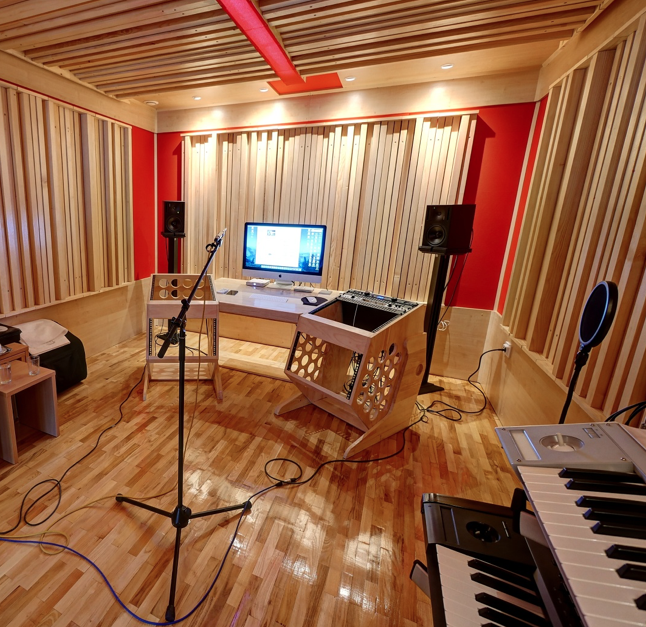
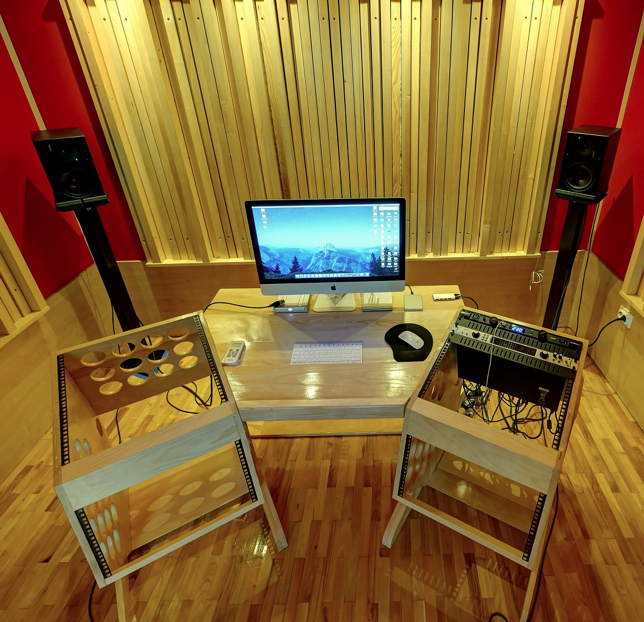
Je ne l'ai pas précisé, mais, un angle adapté est tout aussi important. Bureau, rack, et autres!
Cordialement,
Jean-Pierre
Acoustic Designer @ Neutral & Natural Acoustics
Consultation Acoustique -> me contacter par message privé.
Chris Kazvon
EQ Wizard le verra
Si tu as des mesures avec le protocole précis qui va avec je suis preneur, parce que clairement:
> tout ce qui est longueur d'onde plus grande que le defaut ça va rien changer. À vue de nez tes trous ronds font 15cm, donc ça fait tout ce qui est sous les 2500Hz.
ensuite, tes oreilles sont pas par terre derrière le meuble, mais en "radiation directe" devant les enceintes
Et une fois que ton meuble est rempli comme celui de droite, ben les trous ils sont bouchés
Edit: j'ai l'impression que mon message est un peu sec, c'est pas le but
Chris Kazvon
-------------------------------------------------
Introduction à Hornresp et Tutoriels - Tutoriels Vidéo pour Room EQ Wizard
[ Dernière édition du message le 11/10/2018 à 11:10:27 ]
Jean-Pierre B.
Tes oreilles sont pas par terre derrière le meuble, mais en "radiation directe" devant les enceintes
Certes, mais comme le dit @nmalleus il s'agit de (premières) réflexions
j'ai l'impression que les planches perforées ont au moins 2 avantages même si les meubles sont remplis :
- réduction des surfaces de réflection
Concernant la diffusion...
- création de diffuseurs
D'ailleurs, dans le sens du second point, ne serait-ce pas plus intéressant si les formes perforées étaient aléatoires plutôt que droites et parallèles ?
Mais là n'est pas le but (de diffuser). Il s'agit de rendre le mobilier (bureau/rack etc) le plus transparent possible.
Concernant des mesures, je n'en ai pas concernant les racks (seulement pour les bureaux).
Peu de studios le font. Mais des designers comme Northward Acoustics (les images de mon post), My Acoustic Room (Boggy) (mon second post) ou moi! le proposent pour les clients les plus exigeants.
Cordialement,
Jean-Pierre
Acoustic Designer @ Neutral & Natural Acoustics
Consultation Acoustique -> me contacter par message privé.
Mahaous
Voilà le résultat :
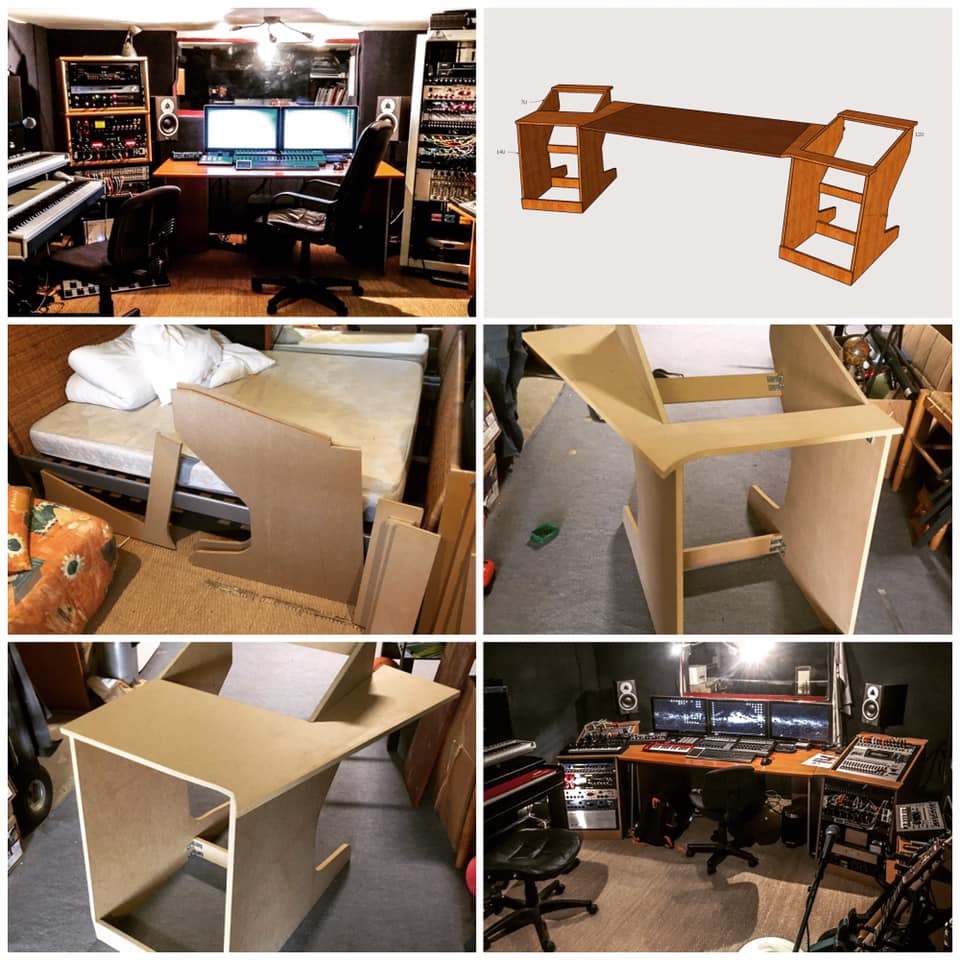
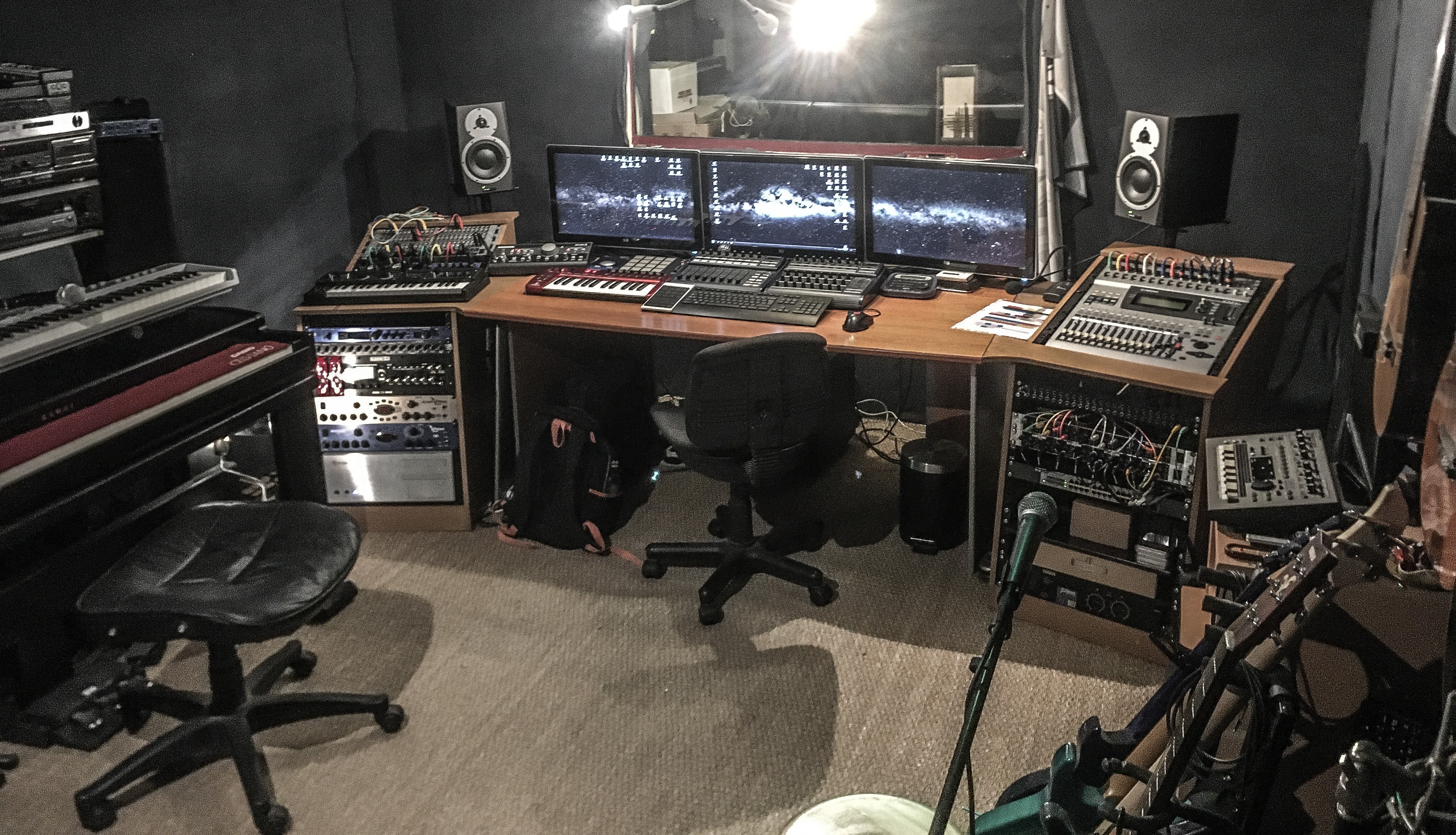
En effet, une bonne circulaire, une sauteuse avec une lame courte et neuve... Et le tour est joué
[ Dernière édition du message le 14/04/2020 à 09:38:34 ]
babaorum
Clip Ideal_Sound - 'Bleu orage' by Ideal Sound
olivier01
Très classe, bravo !
Pour info, tu as pris quelle dimension intérieure pour tes espaces rack, pile 48,26 ou un arrondi supérieur genre 48,5 ou 49cm ou ?!?
Merci !
Chris Kazvon
tu as pris quels rails pour les racks ?
J'en profite pour renouveler ici la demande à Jean-Pierre B. pour les mesures avec / sans trous
Vu ton argumentaire ici + tes contributions à tous les projets de studio sur le forum tu m'as convaincu que ça un impact, mais du coup pour ma culture j'aimerais bien avoir une idée de la mesure dans laquelle ça influe
Citation :Concernant des mesures, je n'en ai pas concernant les racks (seulement pour les bureaux).
Je cherche pas spécifiquement l'effet sur les racks, n'importe quelle mesure de meuble avec / sans ces trous m'intéresse histoire d'avoir une notion de l'impact, si tu as sur les bureaux je prends !
Chris Kazvon
-------------------------------------------------
Introduction à Hornresp et Tutoriels - Tutoriels Vidéo pour Room EQ Wizard
[ Dernière édition du message le 12/10/2020 à 00:16:07 ]
Jean-Pierre B.
le bureau dont je parle est un bureau de chez Northward Acoustics/Northward Systems.
Je pense que tu lis l'anglais, donc voilà les explications :
It houses 8u on top (2/6 or 4/4 config) and 4u at the bottom for PSU etc.
Width is 19" + structure. It's not meant to block floor bounce. Only a much larger desk would somehow effectively block such reflection.
Desk is meant to be as transparent as possible. Slotted design all the way which renders it transparent to frequencies up to ca. 8kHz for structural edge areas and 12kHz for flat areas - geometry takes care of anything higher up (reflecting away from sweet spot).
But interestingly, on all measurements so far the floor bounce is always a bit less pronounced with this desk (around -2/3dB). Why it is I don't know yet - this is not an expected result. It should stay about the same.
The attached ETC shows a Mastering studio with the old desk (classical 2 bays Mastering desk design with gear installed) and then our Type A model (same as used @ Dave Collins Mastering, with gear installed). You can see the clutter in the very early milliseconds cleans up nicely, but the floor effect also drops a few dB.
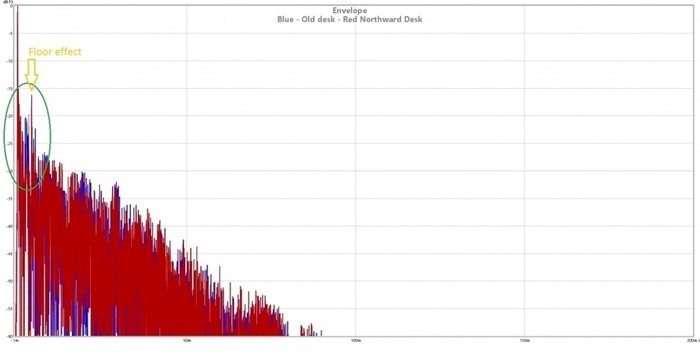
Getting surfaces out of the early reflection area is paramount, and when it comes down to it, there are only a couple ways to do it:
- keep reflective surfaces to a minimum and keep them away from ER areas (physical location & geometry - looking at the full audio frequency spectrum).
- if you can't keep them away, make the surfaces disappear. Which means working a structure that won't be visible to as wide a bandwidth as possible.
The size of our desk can be misleading. Acoustically when at and near sweet spot there basically is no desk, only the actual racked equipment units clusters whose impact are well mitigated or neutralized by shape and properties of the furniture shell.
But gear is still well protected and cabling hidden - as opposed to a purely bare bone structure (like a simple frame holding the gear). We also avoid the use of sensitive fabric surfaces all together
The armrest is basically as big as it can be and fully outside the ER path. We pushed the OCDness to the point of creating a wing-like flared edge on the front area of it to avoid diffraction.
We'll describe this thoroughly and add measurements on the website, but a way to explain how the furniture pods function in practice is to look at it a bit like a level 2 fractal design as far as the low and mid frequencies are concerned.
Level 1: LF - long wavelengths - Diffraction
Diffraction is the ability of a sound wave to move around obstacles (or pass through a slot).
For sound to move around a given obstacle, the size of the obstacle must be smaller than the wavelength (λ). Diffraction will be more pronounced as the ratio λ / d, where d is the width of the obstacle, gets larger. As the sound wave wraps around the object, the wavelength (its frequency) is not affected.
In short, Low Frequencies will diffract around the various elements of the desk and go through the slots a bit like water in a mesh strainer. The desk is transparent at these frequencies.
Level 2: Mid range, shorter wavelengths: slotted design.
When a sound wave passes through a slot opening of dimension (d):
if d~λ or d<λ, the wave is diffracted and it takes the form of a spherical wave (or circular) centered on the Aperture.
if d>λ, the wave passes through without being disturbed, except near the slot edges where negligible diffraction can still occur.
As the sound wave passes through the slot opening, the wavelength (its frequency) is not affected. The desk is transparent at these frequencies too.
The transition between "Level 1" and "Level 2" is smooth and gradual, so there isn't a particular transition frequency where the system doesn't work.
What happens at "Level 2" can be seen as a scaled phenomenon of what's happening at "Level 1". Hence the fractal comparison.
As we move towards high frequencies, from ca. 8KHz for the wider furniture structural edges (near corners) and ca. 12kHz for the slotted areas, the design transitions to a purely geometrical model. The sound waves that do not go through a slot will be reflected away from the listening position. The geometry was optimized taking advantage of typical speaker directivity at such high frequencies.
You can see the direct results in the ETC graph posted in a previous answer - showing difference between a "classical 2 bay design" and our Type A desk both with equipment fitted. A lot of the ER cluster on the blue graph (first ms) is gone on the red.
Now, taste and colors - that's another discussion. A desk has to suit an engineer's particular workflow and no desk will make everybody happy.
Je le dis souvent à mes clients mais les bureaux sont vraiment un gros problème surtout dans les petites pièces. Les bureaux sont sur-dimensionnés et non-optimisés.
Lorsqu'un client a du mal à comprendre, je lui fais prendre des mesures avec et sans bureau. Après ça, son (gros) bureau paraît moins beau
Acoustic Designer @ Neutral & Natural Acoustics
Consultation Acoustique -> me contacter par message privé.
- < Liste des sujets
- Charte


